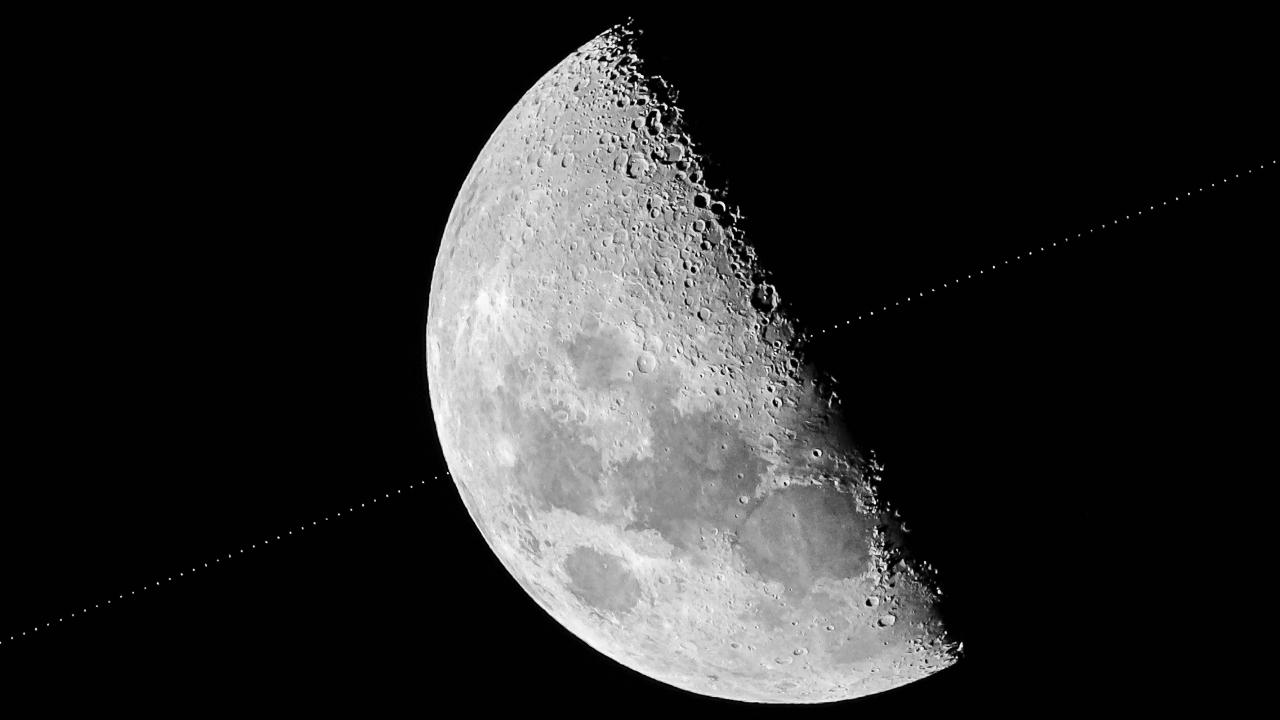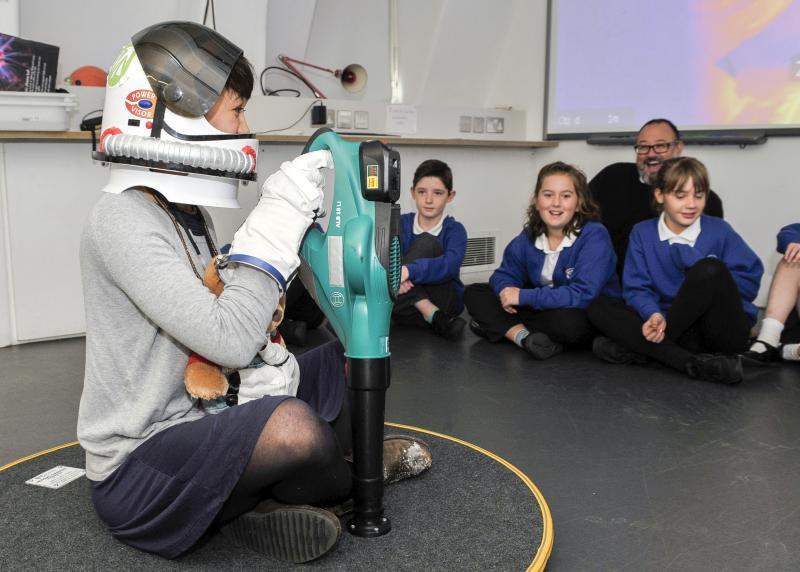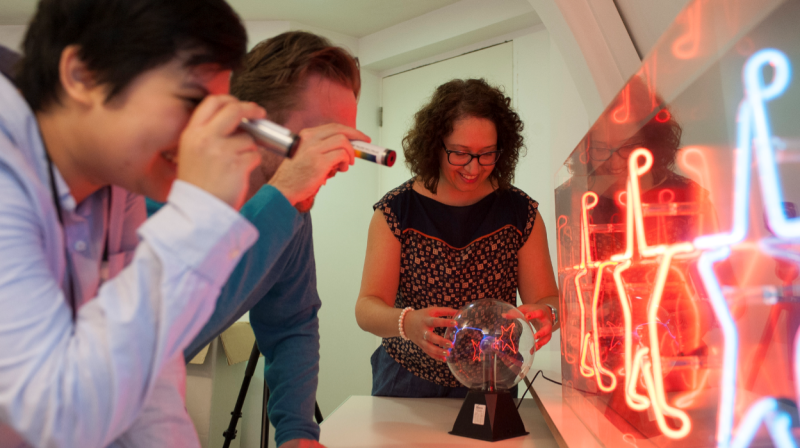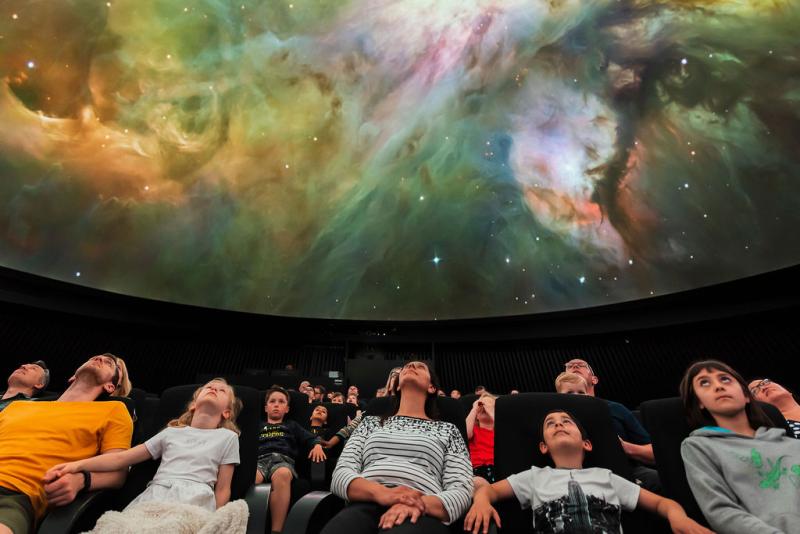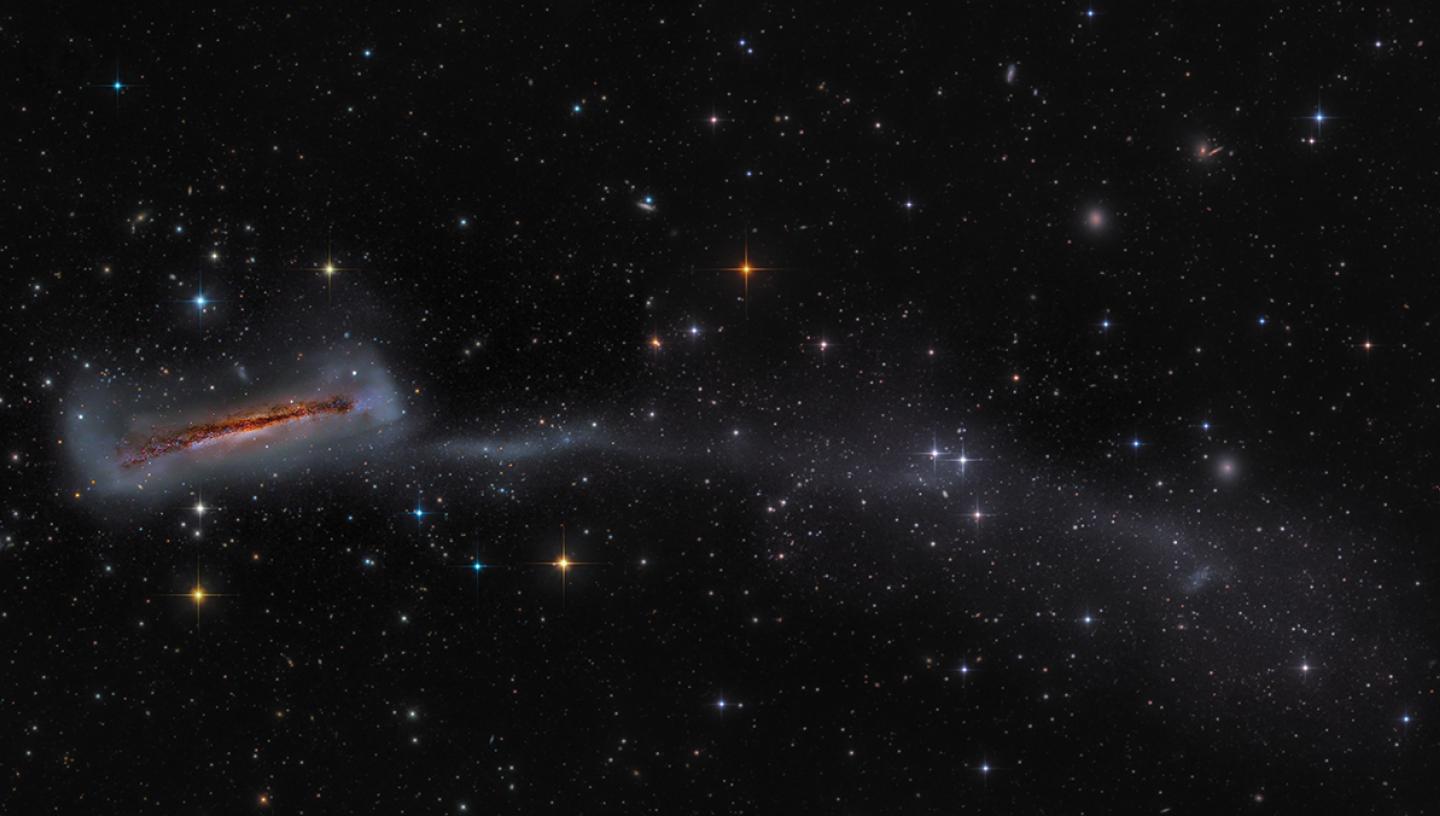
Discover what to see in the night sky in November 2021, including the Pleiades star cluster and the Leonid meteor shower.
Top 3 things to see in the night sky in November
- Throughout the month: Spot the Pleiades star cluster
- 4 November: The planet Uranus reaches opposition
- 17/18 November: It's the peak of the Leonid meteor shower
(Details given are for London and may vary for other parts of the UK)
Look Up! Podcast
Subscribe and listen to the Royal Observatory Greenwich's podcast Look Up! As well as taking you through what to see in the night sky each month, Royal Observatory Greenwich astronomers pick a topic to talk about.
For November, they're talking about NASA's new Lucy mission, the first mission to explore the Trojan asteroids, a population of primitive asteroids orbiting in tandem with the gas giant Jupiter. Have a listen to the podcast below.
Our podcast is available on iTunes and SoundCloud
Astronomy in November 2021: key events and what to see
Throughout the month: The Pleiades and Hyades star clusters
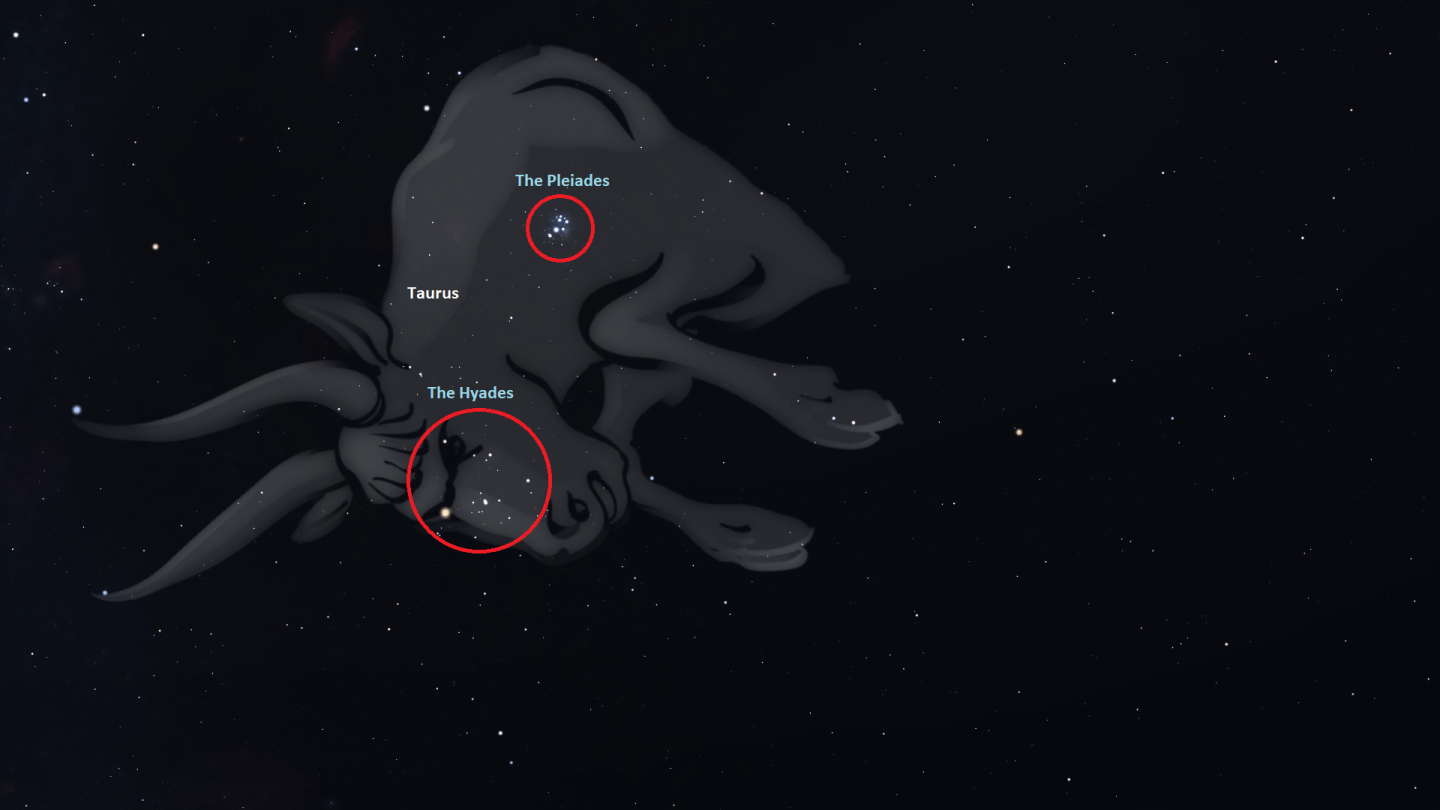
With the new moon occurring on the 4th, use the dark skies at the beginning of the month to explore some of the jewels of the autumn night sky. Look towards the east at around 8 pm and you will spot M45, the Pleiades open star cluster. The Pleiades is also known as the ‘seven sisters’ as you can see seven bright blue stars in the cluster with the naked eye, but grab a pair of binoculars or a telescope and you’ll see that there are actually hundreds of young stars inside the cluster.
Lying close to the Pleiades is a distinctive V-shaped pattern of stars. These stars, which represent the head of the constellation Taurus the Bull, are part of the Hyades star cluster. The “eye” of the bull is marked by the bright orange-red star Aldebaran and although it may look like it is part of the Hyades star cluster, it just happens to lie along our line of sight to the Hyades. Aldebaran lies around 65 light-years from the Earth whereas the Hyades lies about 150 light-years away.
4 November: Uranus reaches opposition
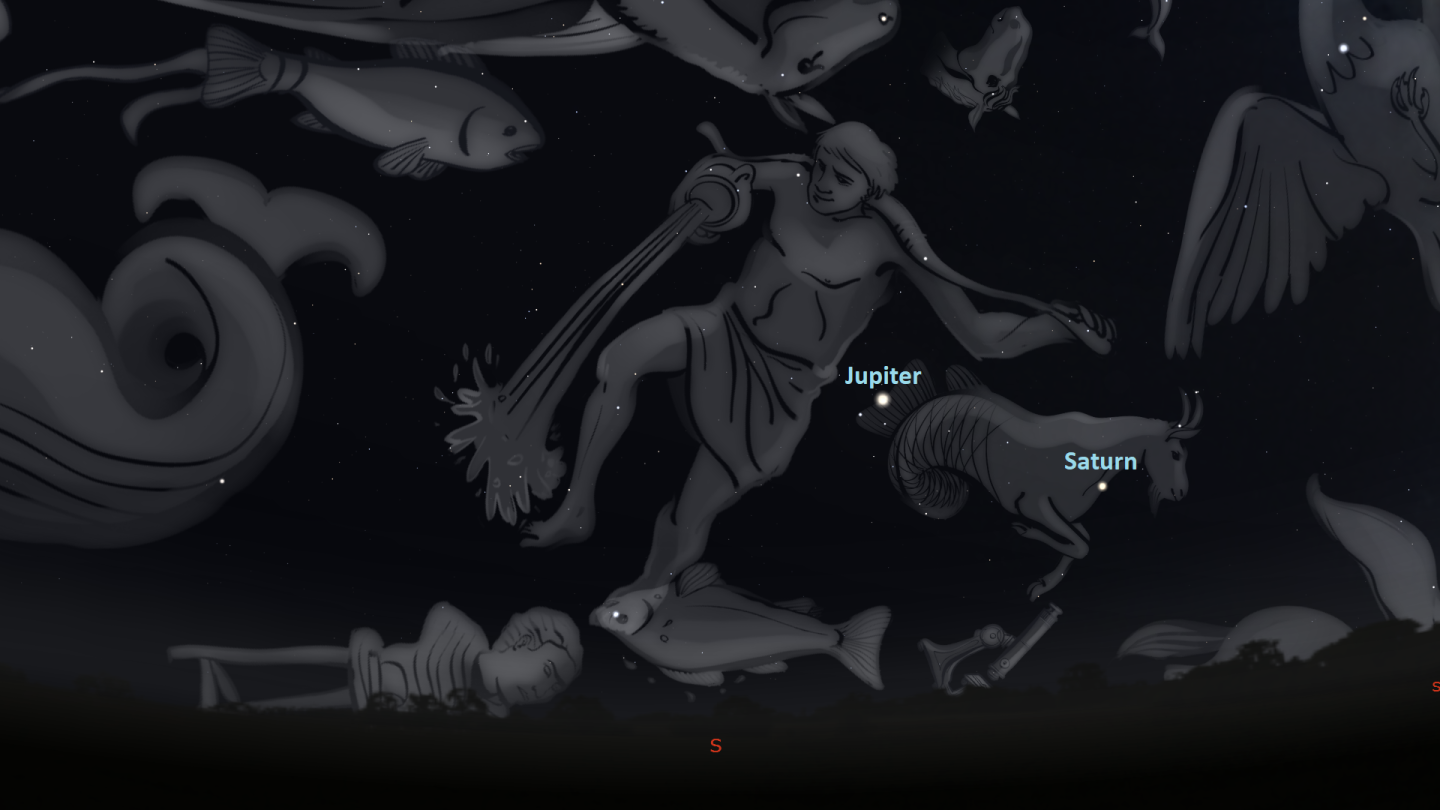
If you’re a fan of the planets, then there are lots to choose from this month. The gas giants Jupiter and Saturn continue to dominate the southern sky in the evenings just after sunset and are easy to spot by eye. If you have a pair of binoculars or a telescope, then definitely use that to gaze at these planets and you won’t be disappointed.
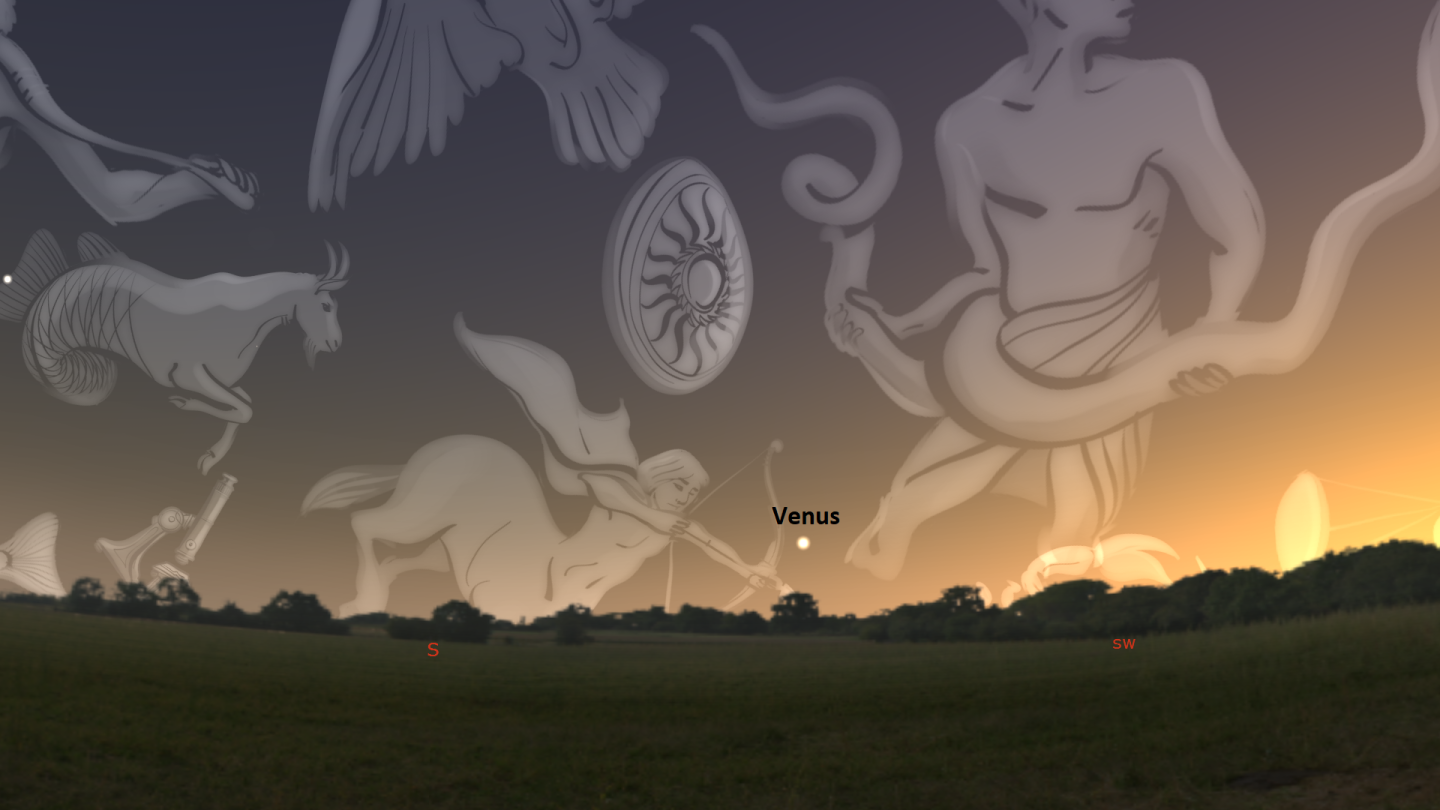
For those with unobstructed views towards the south-west, you’ll be able to catch a view of the planet Venus after sunset. Venus goes through similar phases to the Moon, so if you have a telescope, you can watch the phase of Venus change throughout the month.
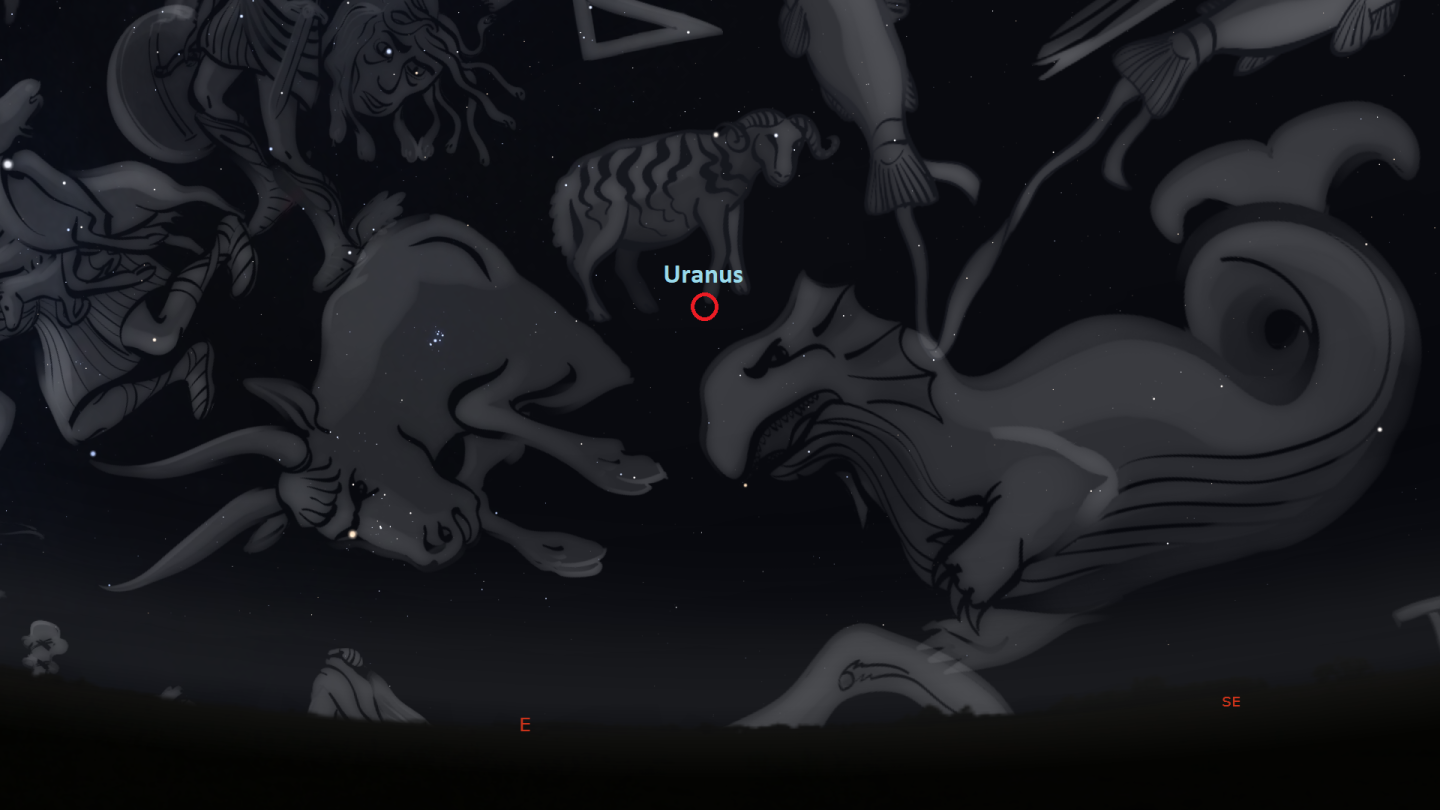
If you are up for a challenge, try to spot the ice giant Uranus which reaches opposition on November 4th. When a planet reaches opposition, it means that the Earth lies directly between the planet and the Sun, in other words, the planet will be on the opposite side of the sky to the Sun. With Uranus at opposition, it will appear at its largest and brightest, making this the best time to view Uranus. Its brightness will place it close to the edge of what can be seen with the naked eye, so spotting the ice giant will be made much easier if you have a pair of binoculars or a telescope.
12 and 17/18 November: The peaks of two meteor showers
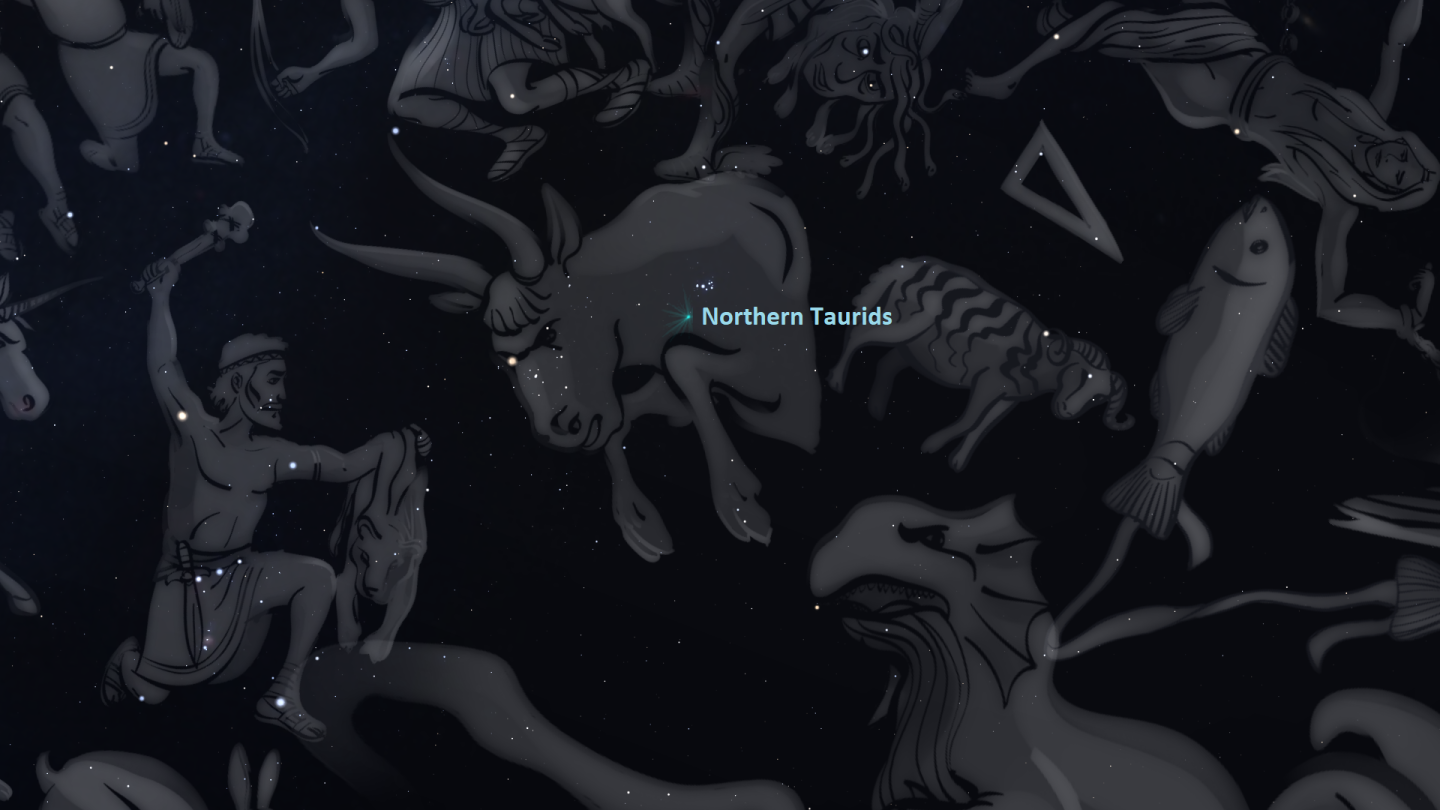
As comets make their way through our solar system, they leave dusty debris trails behind. If the Earth ploughs through this debris, observers on the ground get to see meteor showers. Stargazers will be treated to two meteor showers this month. The first, the Northern Taurids, peaks on the night of the 12th. With a radiant lying in the constellation of Taurus the Bull, the best time to spot this shower will be just after midnight. Although with an average of 5 meteors an hour you’re probably looking at a long night of observing, the Taurids are well known for having a high percentage of fireballs, or exceptionally bright meteors. The Moon will also be in a favourable phase for the Northern Taurids having set before midnight.

The second meteor shower of the month, the Leonid meteor shower, peaks on the night of 17/18 November. The radiant for this meteor shower lies in the constellation of Leo the Lion and the debris responsible for producing this meteor shower comes from Comet Tempel-Tuttle. Averaging at around 15 meteors per hour at its peak, this year’s shower will unfortunately have to compete against the light of an almost full moon.
Southern Hemisphere: Throughout the month - The Peacock and Toucan constellations
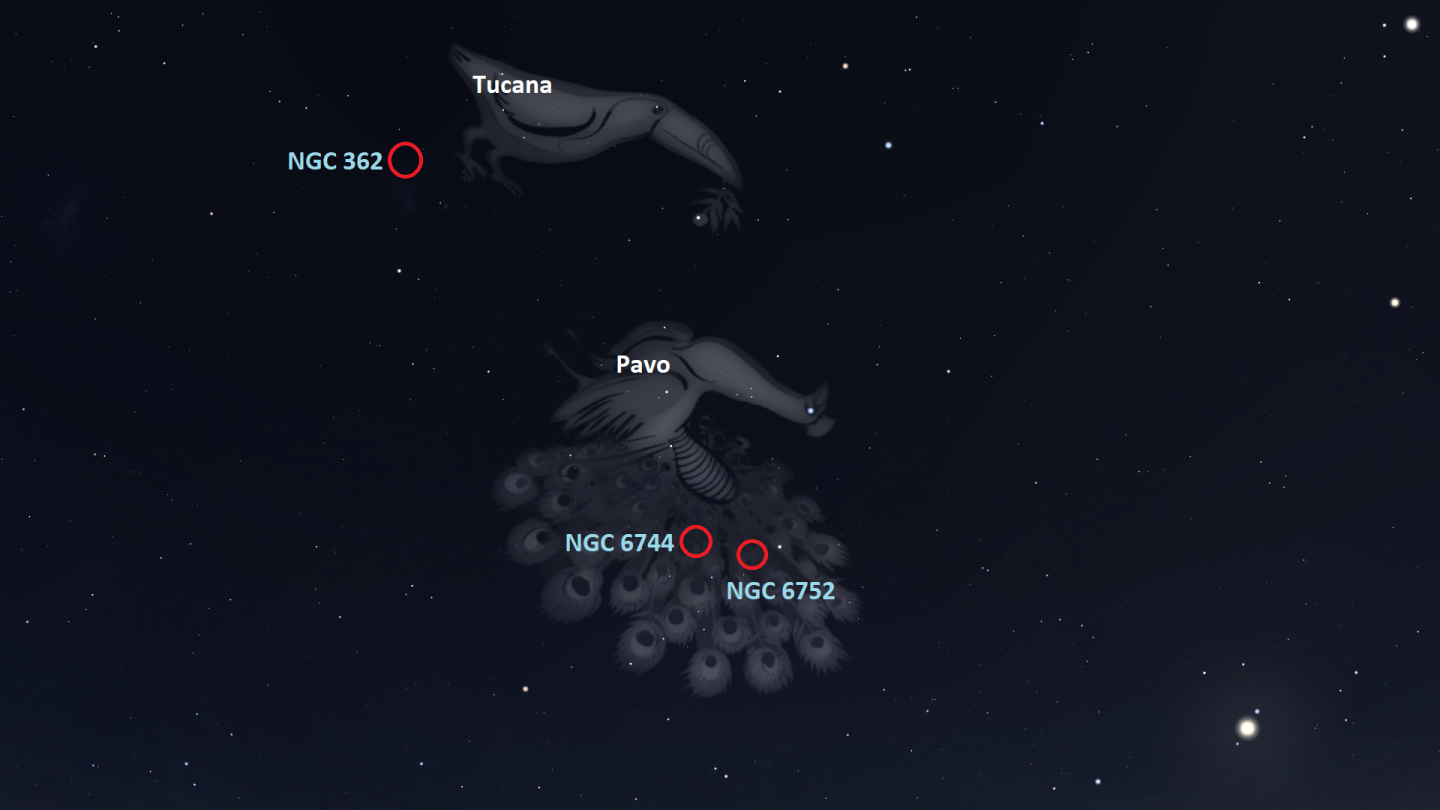
For those living in the Southern Hemisphere, there are some wonderful constellations to look at this time of the year. One such constellation is Pavo, the Peacock, which sits on the edge of the band of the Milky Way. There are two notable deep sky objects lying inside this constellation. The first is a barred-spiral galaxy NGC 6744, one of the galaxies in the local Universe that is most similar to our own Milky Way. Lying about 30 million light-years away, this galaxy is bigger than our own with a disk stretching 175,000 light-years across. The second deep sky object to look at is NGC 6752, the third brightest globular star cluster in the night sky. Located over 10,000 light-years away, this spherical star cluster is over 100 light-years in diameter and contains over a hundred thousand stars.
Lying above Pavo is the constellation of Tucana, the Toucan, and lying within the boundaries of this constellation you’ll find the Small Magellanic Cloud, or SMC, as well as two globular star clusters 47 Tucanae and NGC 362. We explored the SMC and 47 Tucanae in our September night sky blog, and both objects are well worth a look at. NGC 362 is fainter and smaller than 47 Tucanae and does require a pair of binoculars or a telescope to be seen but trust us – you won’t be disappointed seeing this dense stellar swarm. Globular clusters are much older than the majority of stars in their host galaxy, but NGC 362 bucks this trend with an age somewhere between 10 – 11 billion years old. This is younger than the age of the Milky Way galaxy which is estimated to be around 13 billion years old.
The Moon's phases this month
- 4 November: new moon (9:15pm)
- 11 November: first quarter moon (12:46pm)
- 19 November: full moon (8:58am)
- 27 November: last quarter moon (12:28am)
'Hubble Space Telescope transits across the Moon between Lunar X and Lunar V © Michael Marston' was one of the shortlisted images from the 2019 Insight Investment Astronomy Photographer of the Year competition. See the winning and shortlisted images from 2021's Astronomy Photographer of the Year competition in a new exhibition at the National Maritime Museum.
Stargazing Tips
- When looking at faint objects such as stars, nebulae, the Milky Way and other galaxies it is important to allow your eyes to adapt to the dark – so that you can achieve better night vision.
- Allow 15 minutes for your eyes to become sensitive in the dark and remember not to look at your mobile phone or any other bright device when stargazing.
- If you're using a star app on your phone, switch on the red night vision mode.
Need a stargazing telescope or binoculars? Check out our range of high quality observing equipment recommended by Royal Observatory Greenwich astronomers.
See our range of observing equipment
Share your pictures
This month's banner image is 'NGC 3628 with 300,000 Light Year Long Tail' taken by Mark Hanson and it is one of the runner-up images from the Insight Investment Astronomy Photographer of the Year competition 2020.
Do you have any images of the night sky? If so, why not share your photos via our Royal Observatory Astrophotography Facebook group.
You can also connect with us via Twitter: @ROGAstronomers
Planetarium Shows
Join us for live planetarium shows presented by astronomers from the Royal Observatory Greenwich
Royal Observatory Greenwich YouTube channel
Subscribe to our YouTube channel and join us on a journey through time and space as we explore our Universe. You'll find a selection of videos on our channel, including our Observatory Online video series in which our astronomers explore different topics in Astronomy and Space Exploration.
Resources for teachers and students
The Royal Observatory Greenwich's learning team has also created:
- Free animated videos that answer the biggest questions in astronomy and free resources to go alongside them.
- A whole host of podcasts featuring interviews with real space scientists, astronauts and active researchers working in UK universities.
- A 'learning at home' hub which contains a suite of resources for you to use at home.
